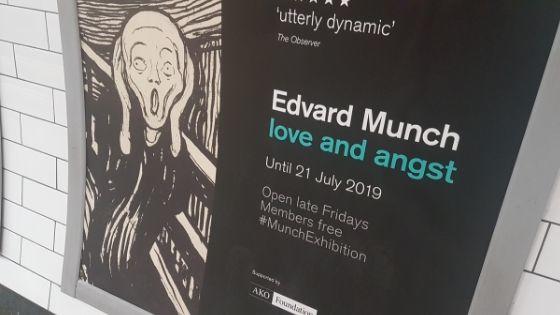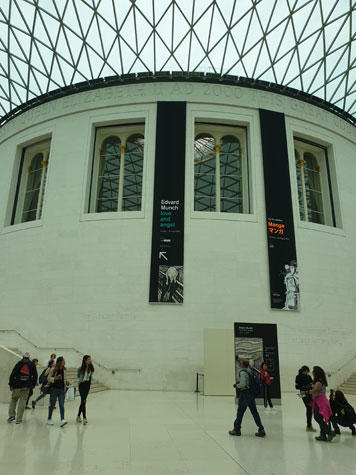
EDVARD MUNCH LOVE AND ANGST
This post may contain affiliate links
Edvard Munch: love and angst is being held at the British Museum.

My friend came down from Leicester and we went off to see this show. This was being shown in room 35 on the 1st floor. Lucky for me, no walking up the stairs with my crutch. When we walked inside, there was a lot of people and it felt quite compact.

“We do not want pretty pictures to be hung on drawing-room walls. We want… an art that arrests and engages. An art of one’s innermost heart.” – Edvard Munch


The creator of art’s most haunting and iconic face. A radical father of Expressionism. Norway’s answer to Vincent van Gogh. But who was Edvard Munch? The British Museum lifts the veil on his life and works in the largest show of his prints in the UK for 45 years. The emotional intensity of The Scream has reverberated through history, speaking to generations. The fact that it needs no explanation is arguably one of its strengths. Yet perhaps it is also the reason that, beyond his name, so little is known about its creator – The Scream speaks for itself. Although it has become a universal symbol of human anxiety, it is a deeply personal response to Munch’s upbringing and experiences as a young artist. I remember seeing this painting when we were in Oslo last year. It was one of the things I was determined to see.


From a young age Munch was preoccupied with death and suffering, following the death of his mother and sister as a child – an anxiety which plagued him throughout his life and shaped his work. His art showed the fragility and extremes of the human experience – escalating from love to loss and tenderness to jealousy.





These were themes that Munch would continually return to – he saw works on certain themes as his ‘children’ – and Munch revisited a series of haunting images about love, jealousy, anxiety and death, which he referred to as ‘the frieze of life’. The artworks were not originally conceived as a single body of work, but developed into one as Munch gradually expanded his ideas. Looking at the cities of pre-war Oslo, Berlin and Paris, the exhibition shows how new ideas about personal and political independence gave rise to an important voice. Visceral, rebellious and hungry for new experiences, Munch rejected his strict Lutheran upbringing to pursue an unconventional lifestyle. He travelled across Europe, drawing artistic inspiration from the bohemian circles he encountered and his passionate love affairs. Munch’s work articulated his experiences of life in a rapidly changing Europe, that was to be shattered by the first global industrialised conflict.

In this collaborative exhibition with the Munch Museum in Oslo, you discover how he mastered the art of printmaking and explore his remarkable body of work. Munch’s innovative techniques, bold use of colour and dark subject matter resonated with shifting attitudes and mark him out as one of the first truly modern artists. A rare lithograph of The Scream and other remarkable printed works by Munch will be on display in this very special exhibition of Edvard Munch: love and angst from 11 April – 21 July 2019. This was amazing to visit and I am so pleased that we got to see this.






No Comments